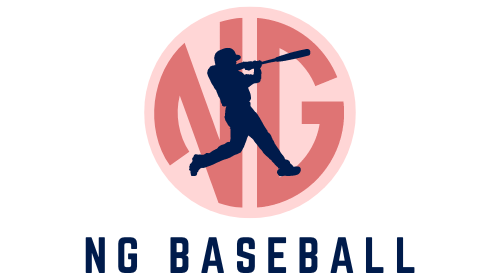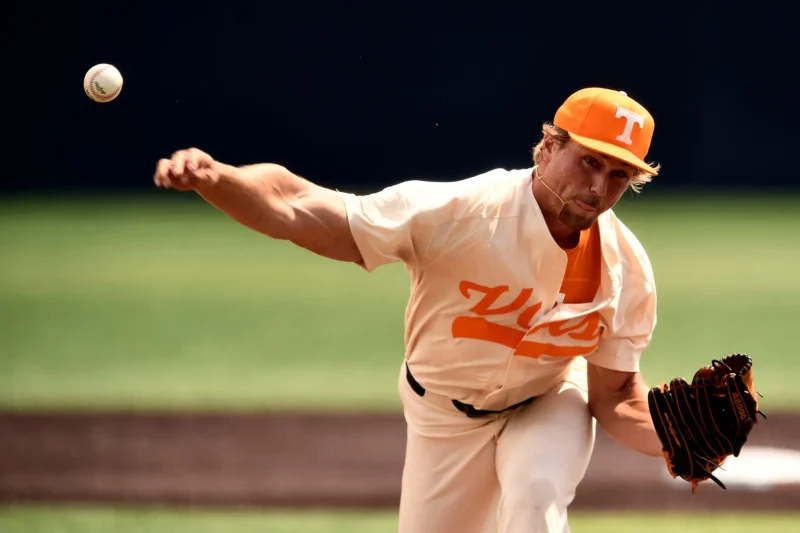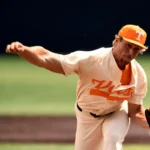Baseball’s pitching speeds have evolved dramatically, fundamentally changing the game. This evolution isn’t just about higher numbers; it’s about how speed reshapes batting strategies and player development, adding excitement to the sport.
This article looks into the world of the fastest pitches, highlighting the talent, science, and physical prowess behind these feats. We’ll explore notable milestones, the pitchers who achieved them, and the impact of their blistering speeds on the game’s landscape.
Key Takeaway
- From Smoke to Sonic Booms: Baseball’s pitch speeds are soaring, and it’s not just about bragging rights. Faster throws are forcing batters to react quicker, develop new techniques, and adapt their strategies on the fly.
- Legends of Lore: While Aroldis Chapman’s 105.8 mph pitch is the official record, whispers of even faster throws from legends like Nolan Ryan and Bob Feller add mystique to baseball’s history.
- New Breed of Speedsters: Young guns like Hunter Greene (105.2 mph), Jhoan Duran (104.8 mph), and Ryan Helsley (104.2 mph) are pushing the boundaries of MLB velocity.
- Batting Averages Taking a Dive: As pitch speeds climb, batting averages are taking a tumble. Teams are rethinking their offensive and defensive approaches, with the crack of the bat giving way to the whiff of the strikeout.
- Age is Just a Number: Veteran pitchers like Justin Verlander (99.3 mph) are defying the “speed fades with age” narrative.
Record-Holding Pitches
In 2010, Aroldis Chapman set a Guinness World Record with a pitch clocking in at 105.8 mph, a milestone that remains a high-water mark in baseball’s speed records. While Chapman’s feat is well-documented, the lore of baseball includes whispers of even faster pitches from legends like Nolan Ryan and Bob Feller.
However, these tales remain unconfirmed, lacking the technological validation of today’s standards. This discrepancy underscores the challenge of comparing historical and modern records.
Chapman’s achievement is cemented in verifiable data, while the rumored speeds of past legends, potentially faster, are left to speculation due to the absence of accurate measuring tools in their era.
Check out this table of the fastest pitches ever recorded!
| Pitcher | Team | Date | Speed (Mhp) |
| Aroldis Chapman | Cincinnati Reds | 2010-09-24 | 105.8 |
| Ben Joyce (college record) | Tennessee Volunteers | 2022-05-01 | 105.5 |
| Hunter Greene | Cincinnati Reds | 2023-09-11 | 105.2 |
| Jhoan Duran | Boston Red Sox | 2023-07-22 | 104.8 |
| Ryan Helsley | St. Louis Cardinals | 2022-09-17 | 104.2 |
Recent Fast Pitches in MLB
In 2023, Hunter Greene unleashed a staggering 105.2 mph pitch for the Cincinnati Reds, showcasing his formidable arm strength and precision. This feat not only highlighted his raw power but also his potential to reshape pitching standards in MLB.
Following closely, Jhoan Duran made waves with a 104.8 mph pitch, a testament to his unique pitching style and technique. Duran’s ability to blend velocity with control places him among the elite pitchers of his generation.
Meanwhile, Ryan Helsley’s contribution to the fast pitch narrative came in the 2022 season with a 104.2 mph delivery. Helsley’s pitch, marked by both speed and accuracy, demonstrates the evolving nature of pitching where velocity is increasingly paired with tactical skill.
These pitchers, with their remarkable performances, are redefining the boundaries of speed in baseball.
Career Moves and Contracts
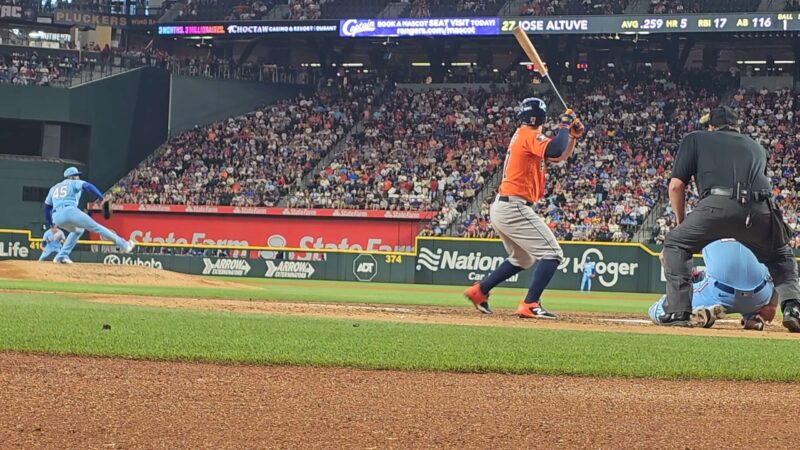
After setting the world record for the fastest pitch, Chapman became one of the most sought-after pitchers in the league. In 2016, he signed a five-year, $86 million contract with the Yankees, the largest deal ever for a relief pitcher.
His pitch speed was a major factor in his market value, as high-velocity pitchers are rare and valuable commodities in baseball. However, in 2023, Chapman decided to join the Royals, a team that had not made the playoffs since 2015.
His move was seen as a risky but bold choice, as he hoped to revitalize the struggling franchise with his arm and leadership. Chapman’s career illustrates how pitch speed can influence contracts and player value, as well as how teams strategize around acquiring high-velocity pitchers.
College Baseball Speed Records
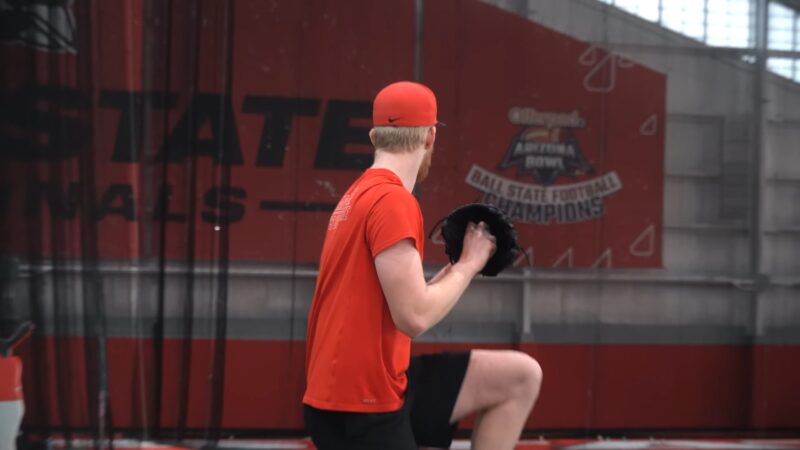
Ben Joyce shattered expectations in college baseball with a jaw-dropping 105.5 mph pitch, a rare feat that places him in a league with professional MLB players. This exceptional speed not only sets a new standard in college games but also bridges the gap between college and professional pitching records, showcasing the rising caliber of young talent.
College speeds, historically lower, are now inching closer to MLB benchmarks, highlighting an era of heightened velocity in the sport. Joyce’s achievement has significant implications for scouting and player development, signaling a shift in how young pitchers are evaluated and trained.
As college pitchers edge closer to professional speeds, scouts are increasingly focusing on raw velocity, alongside skills like control and variety, reshaping the pathway from college to the major leagues.
Impact on the Game
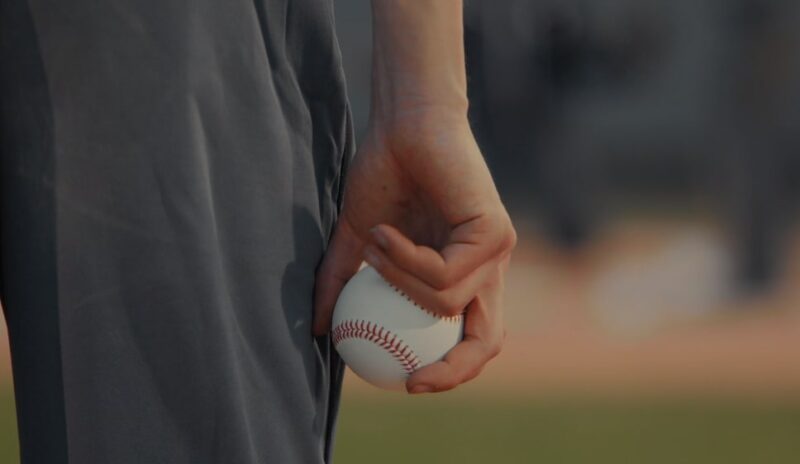
The surge in pitch speeds has significantly impacted baseball, notably lowering batting averages. As pitchers hurl the ball faster, batters face increased difficulty in hitting effectively, resulting in a drop in overall batting performance.
This shift is not just a statistic; it’s changing the fundamental dynamics of the game. Strategies on both sides of the mound are evolving, with teams recalibrating their approach to offense and defense.
The emphasis on speed has led to a more intense, fast-paced game, altering traditional strategies and expectations. In pitcher-batter matchups, the escalated speeds intensify the duel.
Batters now require quicker reaction times and refined techniques to counteract the blistering pitches, turning each at-bat into a high-stakes confrontation. This evolution in speed is transforming baseball into a game where velocity is king, and adaptability is crucial for success.
Veteran Pitchers and Speed
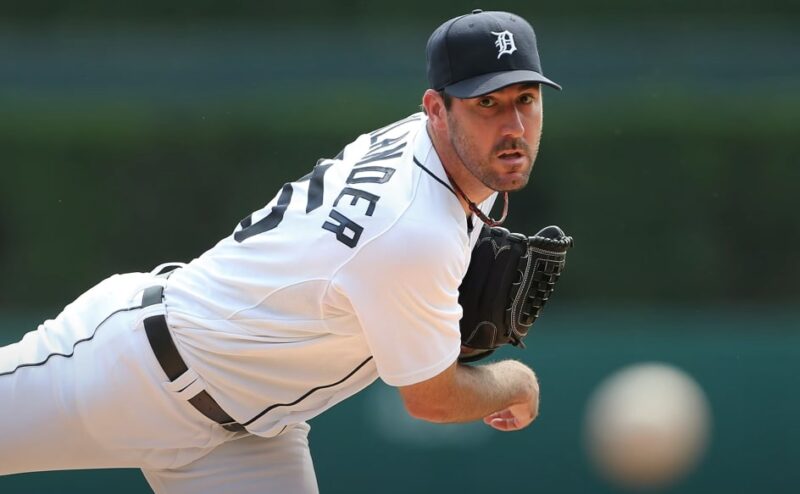
Justin Verlander, defying the typical age-velocity curve, delivered a remarkable 99.3 mph pitch, underscoring his resilience and longevity in the game. This performance challenges the common perception that pitching speed inevitably declines with age.
Veteran pitchers like Verlander navigate changes in velocity not just through natural talent but through adaptation and smart pitching techniques. Their experience allows them to compensate for decreased speed with strategic pitching.
Moreover, advancements in training methods and technology play a pivotal role in extending the careers of seasoned pitchers. These tools enable them to maintain, and sometimes even enhance, their arm strength and pitching mechanics.
Verlander’s sustained velocity is a testament to how continuous training, combined with experience and adaptability, can defy the expected decline in speed with age, setting an inspiring example for upcoming pitchers.
Technology and Pitch Speed Measurement
The PITCH/FX system, integral to MLB, revolutionizes how pitch speeds are tracked and analyzed. This technology utilizes cameras and sensors to accurately measure a pitch’s velocity, trajectory, and other key parameters, providing a detailed understanding of each throw.
However, ensuring accuracy and reliability in speed measurement comes with challenges. Calibration, environmental factors, and technological limitations can affect data precision.
Despite these hurdles, advancements in sensor technology and data processing continue to enhance measurement accuracy. The impact of this technology extends beyond mere statistics.
It informs scouting decisions, allowing teams to evaluate pitchers with a level of detail previously unattainable. Analysts use this data to develop pitching strategies, tailor training programs, and predict player performance. In an era where speed is critical, PITCH/FX offers an invaluable tool for teams striving to gain a competitive edge through data-driven insights.
FAQ
What are the benefits and drawbacks of throwing fast pitches in baseball?
Throwing fast pitches can give pitchers an advantage over hitters, as they have less time to react and adjust to the ball. However, throwing fast pitches can also put a lot of strain on the pitcher’s arm and increase the risk of injury.
How can pitchers improve their pitch speed?
Pitchers can improve their pitch speed by working on their mechanics, strength, flexibility, and conditioning. They can also use drills, exercises, and equipment that help them develop their arm speed and power.
What are some of the barriers that pitchers face when trying to throw fast pitches?
Some of the barriers that pitchers face when trying to throw fast pitches include physical limitations, environmental factors, psychological factors, and rule changes. For example, pitchers may have to deal with fatigue, injury, weather, altitude, pressure, expectations, and regulations that affect their performance.
Are there different types of “fastballs” and how do they affect speed?
Yes, there are several variants of fastballs, each with subtle differences in grip and release that can influence velocity. The four-seam fastball, Chapman’s weapon of choice, prioritizes spin and trajectory, while the two-seam fastball sacrifices some speed for movement and sink.
How has technology impacted the pursuit of faster pitches?
Advancements in pitching mechanics analysis, training regimens, and equipment like specialized gloves and grips have all contributed to pushing the limits of pitch speed. Additionally, radar technology has allowed for more precise measurement of pitch velocity, fueling the competitive drive to break records.
Do faster pitches always translate to success?
While throwing hard throws certainly attracts attention, pitch speed alone doesn’t guarantee effectiveness. Mastering control, location, and a diverse repertoire of pitches is crucial for pitchers to truly dominate hitters.
Final Words
Baseball’s evolution in pitching speed has significantly altered the game, reshaping player strategies and adding a thrilling dimension to the sport. This article has delved into the realm of lightning-fast pitches, highlighting the exceptional talent and physical prowess behind these feats.
From Aroldis Chapman’s record-setting pitch to emerging talents like Ben Joyce, we’ve seen how speed has become a pivotal element in baseball. The impact is evident, from the challenges faced by batters against faster pitches to the shifting dynamics of the game.
As technology advances and training methods evolve, the future of baseball seems poised for even faster and more dynamic pitching. This evolution is not just about breaking records; it’s about the ongoing transformation of baseball into a faster, more intense sport where velocity plays a crucial role in defining the essence of the game.
